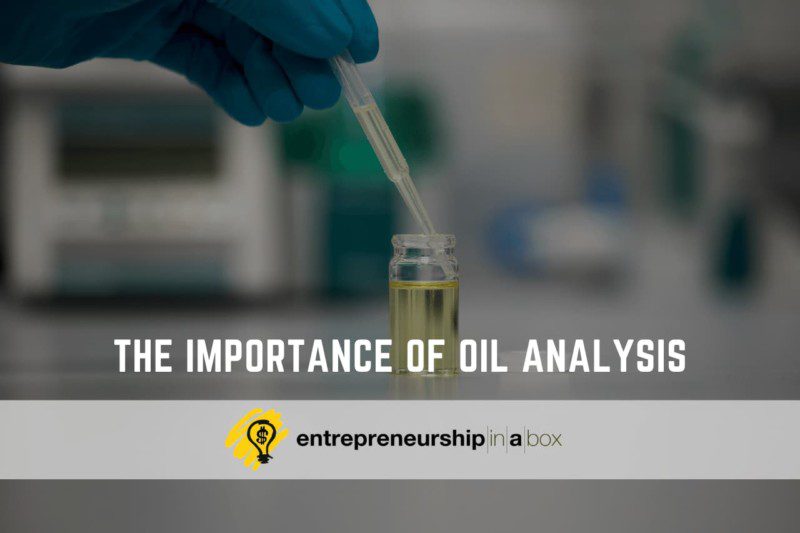Currently, oil analysis is one of the most important maintenance techniques and one that should have priority in creating physical asset management software since it allows rapid and accurate laboratory evaluations of the lubricant used in the equipment. Through the reports generated, the industry can know the ideal conditions of the fluid and the assets. In this way, the maintenance team can be programmed to identify possible failures in advance that compromise the performance and quality of production, avoiding large losses.
Good maintenance is not just done by monitoring the mechanical components; it is necessary to use techniques that benefit the industry and the maintenance teams. Industrial success is directly related to good performance and effective maintenance. The greater the efficiency and the longer the useful life of the equipment, the greater its performance and productivity, both for the machinery and the human teams.
In this article, we will discuss everything no one told you about oil analysis. We will also talk about the importance of this predictive technique for the proper functioning of assets and what are the benefits that your company will have when adopting this technique.
Why perform oil analysis?
Performing the analysis of the oil of the machines is synonymous with the preservation and conservation of its ideal conditions for use. In addition to being considered one of the most important strategies, by using oil analysis equipment, we can find evidence that parts are wearing out. Many managers think that performing this analysis is unnecessary due to its high cost. However, it is extremely essential as it makes it possible to know the physical and chemical conditions of the lubricants. When a company invests in oil analysis, it will only receive benefits such as it will extend the useful life of its components, it will reduce expenses with the purchase of replacement materials, unnecessary oil changes, and scheduled manual maintenance.
By carrying out the study and analysis of this component, it is possible to reduce not only the risk of the shutdown but also to carry out effective actions with some anticipation. It also makes it possible to control wear, increase the useful life of the machines and generate better results, eliminating maintenance costs. The more control you have over your fluids, the better your performance will be.
Constant monitoring of oil quality is essential for machine control and performance. Next, we will see five reasons that explain the importance of this analysis:
- Determine which lubricants are correct to use in each machine;
- Control the performance of the lubrication throughout the use of the machine;
- Identify and monitor contamination by solids and water;
- Guarantee the correct temperature of the equipment following the specifications of each asset;
- Greater control over team performance.

Stages of oil analysis
Before performing oil analysis, it is necessary to understand that this technique is divided into four stages:
Physical-chemical analysis
The physical-chemical analysis aims to evaluate the conditions of the lubricant, indicating the insulation capacity and the state of the president oil in the equipment. Appearance, water, density, viscosity index, TAN (Total Acid Number), Hollin, and Odor, among others, are analyzed.
Contamination analysis
Imagine that the industrial lubricant — which has the function of reducing the friction and wear of the gears — was contaminated. The effects caused can be very serious and can accelerate the wear of parts. As we already know, oil contamination can occur due to the chemical reactions of the lubricant, due to wear between the parts, or due to external substances. The main function of this analysis is to identify particles that can contaminate the system, such as water.
Spectrometric Analysis
In spectrometric analysis, it is possible to determine which chemical elements are present in the oil such as metals, contaminants, and additives. This is why spectrometric analysis is essential for failure prevention.
The main elements determined by spectrometry are:
- Wear metals: Iron, Copper, Lead, Chrome, Nickel, Aluminum, and Tin.
- Additives: Molybdenum, Zinc, Calcium, and Magnesium.
- Pollutants: Silicon.
Constant monitoring of these values is essential.
Ferrography
This resource consists of analyzing the particles found in samples of oils and fats, thus it is possible to determine the severity and the reason for the wear of the assets. This oil analysis can be done on three types of fluids: diesel, hydraulic, and lube. Once the identification of which method is necessary to implement has been made, we have to define which assets need to be inspected. After this, it is essential to collect data to take them to the laboratory for their corresponding diagnosis. It is important to remember that the faster the data collection, the faster the delivery of the result.
After all, oil analysis cannot be ignored in many situations and is one of the most important considerations in any industry.



